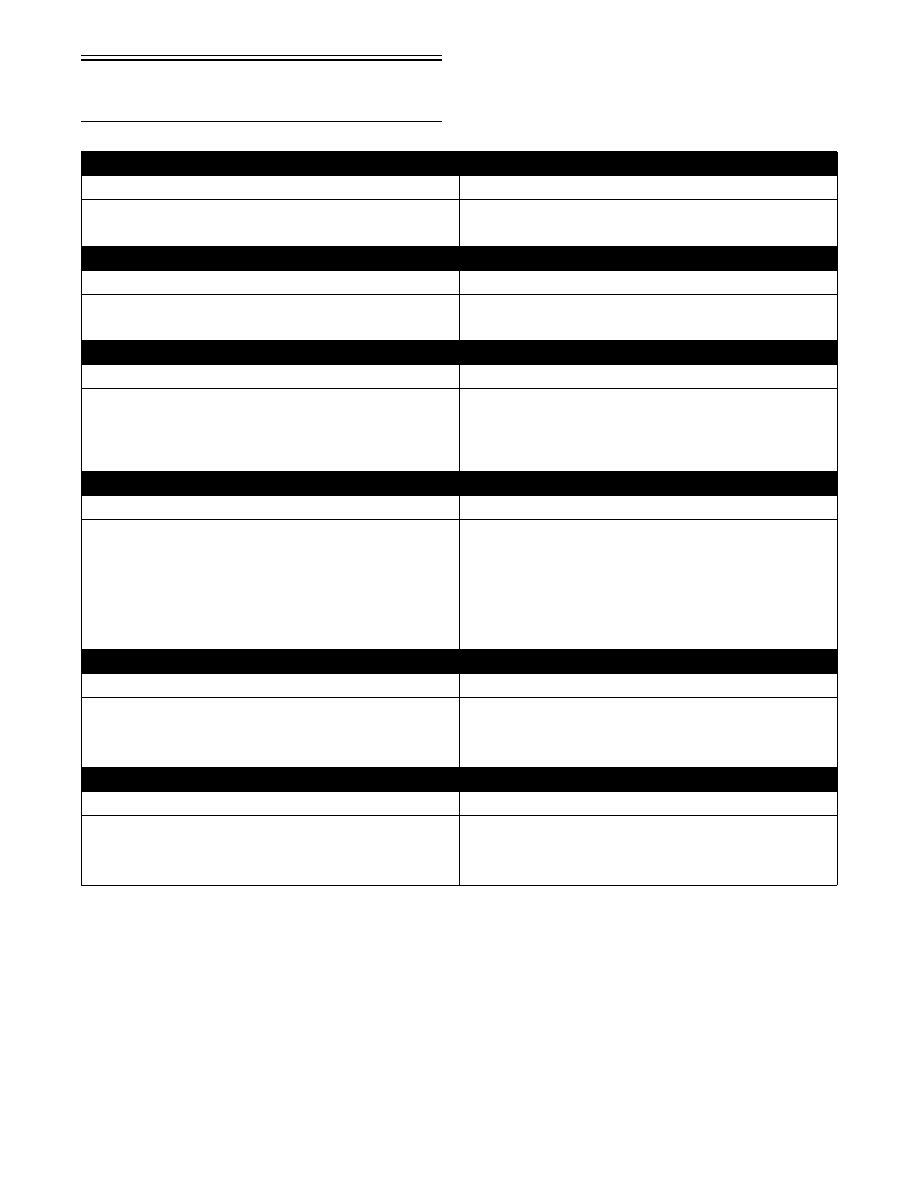Snowmobile Arctic Cat (2008 year). Manual - part 110

6-84
Troubleshooting
Hydraulic Brake System
Problem: Caliper Leaks
Condition
Remedy
1. Caliper O-ring deteriorated — severed
1. Replace O-ring
2. Piston — O-ring damaged
2. Repair piston — replace piston — O-ring
Problem: Lever Spongy — Bottoms Out
Condition
Remedy
1. Brake system air bubbles present
1. Bleed brake system
2. Master cylinder damaged — faulty
2. Replace master cylinder
Problem: Oscillation Feedback in Lever
Condition
Remedy
1. Brake pad residue present on brake disc
1. Replace pads — clean disc
2. Caliper loose
2. Tighten mounting bolts
3. Brake disc warped — cracked — damaged — mis-
aligned
3. Replace disc — driven shaft bearing
Problem: Loss of Brake
Condition
Remedy
1. Brake fluid overheated — contaminated
1. Replace fluid
2. Master cylinder damaged — faulty
2. Replace master cylinder
3. Caliper — brake hose leaking
3. Replace caliper O-ring — repair piston —replace pis-
ton — O-ring — brake hose
4. Air ducts obstructed — missing
4. Remove obstruction — replace air ducts
5. Brake lever linkage damaged
5. Repair — replace lever — mounting bolt
Problem: Brakes Drag
Condition
Remedy
1. Master cylinder damaged — faulty
1. Replace master cylinder
2. Brake disc warped — damaged — misaligned
2. Replace disc — driven shaft bearing
3. Brake pads worn — tapered
3. Replace pads
Problem: Snowmobile Won’t Stop — Have to Pull Too Hard on Lever
Condition
Remedy
1. Pads/brake disc glazed
1. Replace pads — clean disc
2. Brake lever binding
2. Loosen pivot bolt — replace master cylinder
3. Caliper pistons binding
3. Service caliper assembly